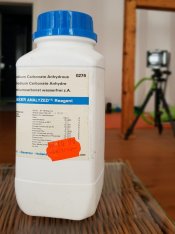Hello,
last weel I put a Fomapan 400 in my "new" Pentax Espio 928. The camera takes the ISO setting from the film
cartridge. When the roll was exposed I found to my surprise that there is no DX coding on the
cartridge at all. According to the camera manual the camera sets itself to ISO 25 when no DX code is available. So instead of ISO400 I shot the roll with ISO 25.
Is there a chance to "repair" this during developing? There is nothing important on the film, but I would like to try to rescue it. At the moment I have Rodinal and D-76 on the shelf.
Thanks, Matti
last weel I put a Fomapan 400 in my "new" Pentax Espio 928. The camera takes the ISO setting from the film
cartridge. When the roll was exposed I found to my surprise that there is no DX coding on the
cartridge at all. According to the camera manual the camera sets itself to ISO 25 when no DX code is available. So instead of ISO400 I shot the roll with ISO 25.
Is there a chance to "repair" this during developing? There is nothing important on the film, but I would like to try to rescue it. At the moment I have Rodinal and D-76 on the shelf.
Thanks, Matti















